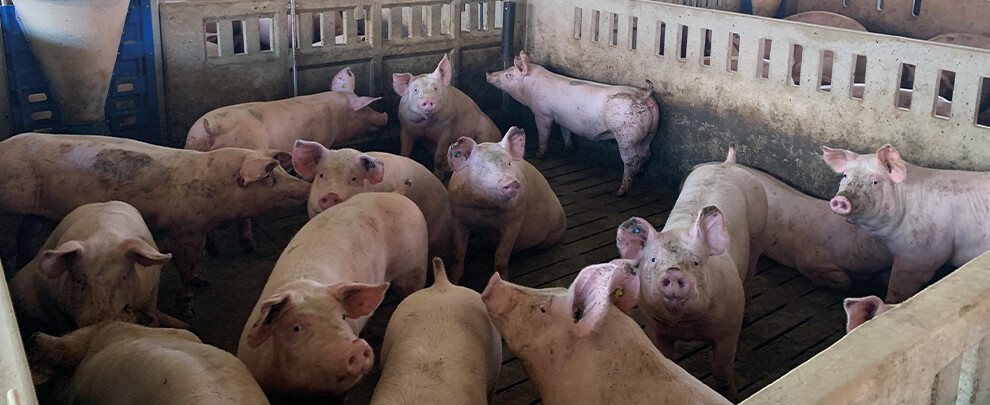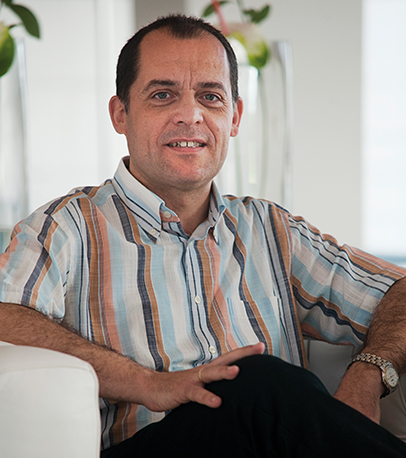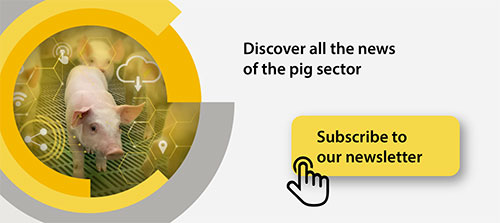Blog
Blog

Genes that protect pigs from respiratory diseases identified
15th October 2024 - News
The national research project Resilmarker, carried out by the University of Lleida professors Lorenzo Fraile and Romi Pena, has made it possible to identify some genetic variants that could have a protective effect against porcine respiratory complex (PRDC), a syndrome that reduces pig performance while increasing their production costs due to the increase in respiratory problems during the breeding phase—the increase in the mortality rate and the costs of its treatment. We spoke with Lorenzo Fraile, the one responsible for the project, who explained how the research has been conducted.

Lorenzo Fraile, professor at the University of Lleida. Photo: Lorenzo Fraile.
How did the national research project Resilmarker come about?
The Resilmarker research project was created two years ago to continue the ResilQ project. Since their inception, both projects have sought to address the knowledge of genetic markers that may be associated with disease resilience. So, what we have done so far in the two projects is to identify animals resilient to certain diseases.
What diseases are the main focus of this project?
At ResilQ, we study PRRSV (porcine reproductive respiratory syndrome virus) more. At the same time, at Resilmarker, we have expanded our research and focused on all pathogens of the porcine respiratory complex: PRRSV and bacteria such as Actinobacillus pleuropneumonia and Streptococcus suis. In other words, we have studied markers that confer resistance to PRRS and viral and bacterial co-infections. In both projects, we studied genetic markers and attempted to identify the genetic differences between resilient and susceptible animals to diseases.
How has the project developed?
The project is defined in two parts. On the one hand, there is the field part, which I care for. This part is the beginning of the project and consists of identifying the animals, selecting the farms, taking the samples, etc. If we choose animals poorly, we can hardly conclude. Specifically, we have analysed a thousand fattening animals from 10 farms. On the other hand, Dr. Romi Pena is in charge of the laboratory and, with the support of two technicians, has worked to identify the genetic markers associated with resilience to diseases.
Could you explain how the genetic identification process works?
It is done in two ways. The first, where we started, is to check if markers described by other researchers also worked in our case; that is, to see if these alleles or genetic variants were more present in resilient animals. The second thing we did was complete the genome sequencing of the animals we identified well. We sequenced the entire animal genome, and through massive genetic association studies, we looked at how the alleles correspond to disease resilience. We are now in the phase of identifying new markers, and this can only be done by sequencing the genome of the animals. To understand it better, we saw that, in humans, for example, COVID-19 affected each person differently within the same family. Genetic variants in human medicine have also been identified, which explains why some people suffer from this virus more severely and others do not.
What challenges have you encountered along the way?
We had two significant challenges. Firstly, identifying the animals was a critical and great challenge; we have done well. We have received support from various production companies that have provided us with their clinical cases. Their collaboration has been essential. Secondly, we had the challenge of doing all the laboratory work because of the whole genome sequencing. On the one hand, human medicine is consolidated, but pig medicine is a field in development. Luckily, the entire laboratory has worked well for us.
What are the genetic criteria that mean increased disease resilience in pigs?
They are what we call markers. We know that on chromosome 4 in the pig, there is a gene called GPB5. It is a protein with biological functions, but depending on the animal's variant, it is more or less resilient. For example, you are more susceptible if your father and mother transfer allele A. But on the other hand, you are more resilient if they transfer the A and G to you. This is what we have worked on and denoted.
What benefits do you think this project can bring to Spanish pig production?
We know that the diseases we work with lead to an increase in the cost of production, although it is tough to determine how much this increase can be since it depends on each farm and its circumstances. Through our collaboration with companies specialising in production costs, we know that a severe porcine respiratory complex can increase the cost of production by up to 10 euros per pig. In other words, a pig affected by a porcine respiratory complex can cost up to 10 euros more than a pig unaffected. These variants allow us to improve the response, which, making an estimate, could be 50%, which would mean a profit of up to five euros per pig. This may seem unimportant, but if you produce millions of animals, it will have a considerable impact.
What impact do you think it will have in terms of animal welfare?
The most resilient animals are animals that pass diseases better. Also, with the Resilmarker project, we have ensured that these animals can consume fewer antibiotics to treat common bacterial infections in the field since the most common is suffering from viral-bacterial co-infections. Therefore, as previously mentioned, it has tremendous implications for animal welfare and economic impact.
What are the next steps for the Resilmarker project?
Recently, we received the Best Poster Award at the 27th World Congress of the International Swine Veterinary Society and the 15th European Symposium on Swine Health Management (https://www.ipvs2024.com/) for this research. We want to continue in this line of research and apply for a new project with which we want to continue advancing in research and further refining our work. We aim to find other variants and define a good panel of markers that will allow us to distinguish an animal resilient to the porcine respiratory complex. Another step, already a reality, is our agreement with production companies to implement our knowledge in the field. In other words, some companies have opted for this to improve the health of their farms. You can vaccinate and have good animal management, but a strategy that no one has considered until now is to work on resilience for disease control. We have been doing this since 2012, and after twelve years of research, we have a great deal of knowledge, and now we want our project to have a practical application.








